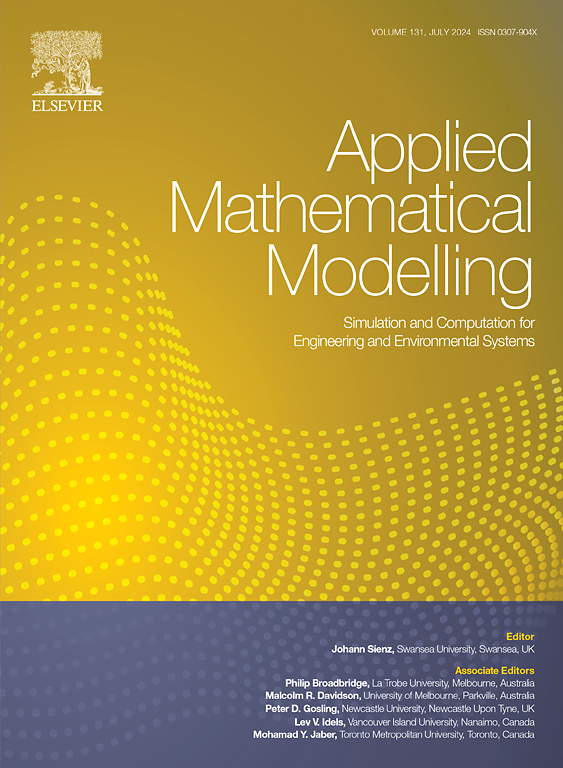An evolutionary features-based neural grey system model and its application
IF 4.4
2区 工程技术
Q1 ENGINEERING, MULTIDISCIPLINARY
引用次数: 0
Abstract
Effectively addressing nonlinear small-sample data has been a critical focus in time-series research. Due to their “black-box” nature and strong reliance on data scale, traditional machine learning models often struggle with such datasets, prompting many studies to adopt neural grey models. However, existing neural grey models frequently suffer from overfitting and limited predictive accuracy. To address these issues, this study integrates the random vector functional link network into grey models for the first time and proposes five evolutionary feature-based training algorithms for the hybrid framework. Through evaluations on five real-world cases using four accuracy metrics, the proposed model which is based on moth-flame optimization algorithm demonstrates superior performance, achieving mean absolute percentage error improvements ranging from 6.5181% to 96.7559% compared to 21 grey models and 15 machine learning models. Additionally, the study reveals that increasing neuron counts and iteration steps enhances model complexity and training time, underscoring the importance of optimizing these parameters for improved performance. This research bridges the gap in random vector functional link network applications for small-sample data and partially alleviates the limitations of neural grey models in terms of overfitting and predictive accuracy.
基于进化特征的神经灰色系统模型及其应用
有效地处理非线性小样本数据一直是时间序列研究的关键焦点。传统的机器学习模型由于其“黑箱”性质和对数据规模的强烈依赖,往往难以处理这样的数据集,促使许多研究采用神经灰色模型。然而,现有的神经灰色模型经常存在过拟合和预测精度有限的问题。为了解决这些问题,本研究首次将随机向量功能链接网络整合到灰色模型中,并提出了五种基于进化特征的混合框架训练算法。通过使用4个精度指标对5个真实案例进行评估,与21个灰色模型和15个机器学习模型相比,基于飞蛾火焰优化算法的模型表现出优异的性能,平均绝对百分比误差改善幅度在6.5181%至96.7559%之间。此外,研究表明,增加神经元数量和迭代步骤会增加模型的复杂性和训练时间,强调优化这些参数对提高性能的重要性。本研究弥补了随机向量函数链接网络在小样本数据应用中的空白,部分缓解了神经灰色模型在过拟合和预测精度方面的局限性。
本文章由计算机程序翻译,如有差异,请以英文原文为准。
求助全文
约1分钟内获得全文
求助全文
来源期刊

Applied Mathematical Modelling
数学-工程:综合
CiteScore
9.80
自引率
8.00%
发文量
508
审稿时长
43 days
期刊介绍:
Applied Mathematical Modelling focuses on research related to the mathematical modelling of engineering and environmental processes, manufacturing, and industrial systems. A significant emerging area of research activity involves multiphysics processes, and contributions in this area are particularly encouraged.
This influential publication covers a wide spectrum of subjects including heat transfer, fluid mechanics, CFD, and transport phenomena; solid mechanics and mechanics of metals; electromagnets and MHD; reliability modelling and system optimization; finite volume, finite element, and boundary element procedures; modelling of inventory, industrial, manufacturing and logistics systems for viable decision making; civil engineering systems and structures; mineral and energy resources; relevant software engineering issues associated with CAD and CAE; and materials and metallurgical engineering.
Applied Mathematical Modelling is primarily interested in papers developing increased insights into real-world problems through novel mathematical modelling, novel applications or a combination of these. Papers employing existing numerical techniques must demonstrate sufficient novelty in the solution of practical problems. Papers on fuzzy logic in decision-making or purely financial mathematics are normally not considered. Research on fractional differential equations, bifurcation, and numerical methods needs to include practical examples. Population dynamics must solve realistic scenarios. Papers in the area of logistics and business modelling should demonstrate meaningful managerial insight. Submissions with no real-world application will not be considered.
 求助内容:
求助内容: 应助结果提醒方式:
应助结果提醒方式:


